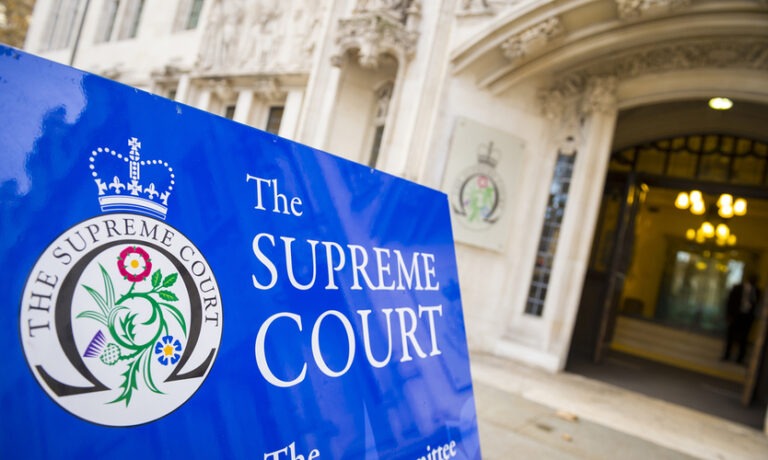Bench Update – The UK Supreme Court’s Decision on the status of employees in the “gig -economy”
Uber BV and Others (Appellants) v Aslam and Others (Respondents) [2021] UKSC 5
Introduction
In the wake of gig-economy, which is typically defined as a labor market where employees are engaged in short-term contracts or freelance work as opposed to permanent job positions, the question of whether one is an employee or not comes to play.
It begs the question as to whether such persons are employees in the literal sense or independent contractors. This becomes even more complicated when the said job engagement involves an online platform and different players/customers.
This issue was addressed by the UK Supreme Court in its judgment rendered on 19th February 2021, in favor of drivers against Uber BV and its subsidiaries. The court ruled that Uber London did not act as an agent for drivers (principals), but rather contracted with passengers and engaged drivers to carry out bookings. The drivers were always workers when logged into the app within London and willingly ready to accept trips. The argument that drivers were workers merely during periods when driving passengers was rejected.
Summary of Facts
Uber drivers (Respondent/Claimants), working via the Uber App platform, sought recognition as employees of Uber and its affiliates (Appellants) claiming that they should be paid the minimum wage under the National Minimum Wage Act and paid annual leave under the Working Time Regulations.
Uber argued that the drivers were self-employed independent contractors, and that it owed them no worker or employee obligations, and that their contracts described the drivers as \”partners\” and stated that \”nothing shall create an employment relationship between Uber and the partner\”. The drivers on the other hand argued that this was a sham, contending that they were workers, despite some substantial measure of independence on when and where they would work.
Issues and Determination of the Court
To determine the status of employment of the drivers, the following issues arose for determination:
- What kind of relationship existed between Uber and its drivers?
- Whether the Claimants were independent contractors
- Whether the Claimants were workers under the Employment Rights Act; and
- Whether the drivers were entitled to the worker’s rights.
On the first issue, the court refuting the claim that Uber was merely acting as disclosed agents for the drivers, held that there existed no agency relationship and Uber was not an intermediary.
Addressing the second issue, the court found the drivers were engaged in a contract of service and were therefore employees rather than independent contractors. Several tests including the control test and the hierarchy and interdependence tests were applied in determining this issue. Uber exercised control over drivers in the following facets; determining a fixed remuneration payable, dictating contractual terms in the signed agreements, which terms were not subject to negotiation, controlling the information availed to drivers, and monitoring services delivery through the rating system, among others.
In determining the third issue and their status under the Employment Act, the court held the drivers to be workers under the second limb of Section 230 of the said act which provides thus; ‘… a \”worker\” entitled to the minimum wage or paid holidays is anyone;
(a) with a contract of employment; or
(b) anyone who personally performs work but not for a client or customer.
Having established the status of the drivers as workers (employees), the court addressed the fourth issue in the affirmative. The drivers were entitled to workers’ rights under the Employment Act, the Working Time Directive Regulations, and the National Minimum Wage Act 1998.
Rationale of the Court’s Decision
The inclusion of the drivers in the second limb of workers was to extend protection to workers just as the protection extends to employees in the strict sense. The fact that a seasonal casual worker periodically works for the same employer but often neither party has any obligations to the other in the intervals between engagements should not have a bearing on the employment status of the person and denying them the worker status.
The Kenyan Perspective
The laws governing employment in Kenya, alongside international laws include: The Constitution of Kenya, 2010, Article 41; the Employment Act, 2007; the Labor Relations Act; and the International Labor Organization Regulations which provide for the right to fair labor practices.
Section 2 of the Employment Act defines an employee as a person employed for wages or salary including apprenticeship. Description of work does not define an employee.
Considerations in determination of an Employee\’s Employment Status
An employment status leads to the conclusion of two types of contracts; contract of service; and contract for service.
In both types of contracts, a relationship is created between the service provider and the recipient of the services, for which there is a consideration for the services rendered (remuneration). The main difference however is the level of control. In a contract for service there is no control element and the service provider therefore qualifies as an independent contractor, whereas in a contract of service there is an outright element of control on the service provider by the recipient. An example of a contract for service is a consultancy, and a contract of service creates an employer-employee relationship.
The question of whether one is an employee under a contract of service, or an independent contractor is dependent on the following considerations and tests;
- the degree of control;
- the integration test;
- economic reality test; and
- mutuality of obligation test
How does the case affect you?
The jurisprudence established will prevent the misclassification of workers to their detriment by exploitative employers. It is a relief to workers especially those working on shifts or on online platforms will likely, and to a great extent, streamline relations by creating some substantial measure of employee’s rights consideration in contract making. On the other hand, employers are forced to stop hiding under the hem of independent contracts to deny their employees’ rights. The purposive interpretation of their relationship with the employees will be considered from a legislative rather than a contractual perspective notwithstanding their superior bargaining power, hence a call to their being cautious while drafting and negotiating employment contracts.
Commentary
The Uber case persuades courts to be more inclined to determine employees’ rights within the ambit of statutory provisions, purposively, other than under the terms of the contract because the superior party, the employer, may have crafted the contract in a way to exploit the vulnerable employee, which terms the employee might not have a say in.
It is our expectation that going forward the employers will now bear a burden of proof in determining whether there exists an employment relationship between themselves and their gig workers.
If you have any enquires relating to the Uber case or other general enquiries on employment law do not hesitate to contact James Wairoto on jwairoto@mwc.legal. Please note that this e-alert is meant for general information only and should not be relied upon without seeking specific subject matter legal advice.







